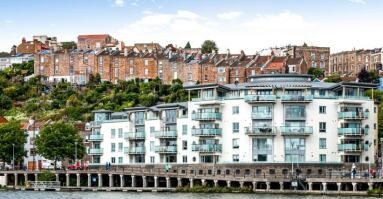Leasehold properties are very common, especially in Bristol. They tend to be flats, but many maisonettes are often leasehold as well. You may hear some people warning you to avoid leasehold properties, for reasons like hidden charges (escalating ground rent) or problems with extending a lease.
If you’re thinking about buying a leasehold property, don’t let these concerns put you off. You just need to know what amounts to a red flag, and the ways you can work around any possible issues.
How is leasehold different to freehold ownership?
When you buy a freehold property, you own the building and the land. You own it for an unlimited period, until you decide to sell it.
Leasehold ownership is a little more complicated. When you buy a leasehold property, you own the building, but not the land on which it is built. The freeholder owns the land and you’re effectively their tenant for the period of the lease.
Check the length of the lease
Even though you’re buying the property, the lease will have its own lifespan. Often these are ‘long leases’ that began at 999 years and will have plenty of time left on them. However, some leases are much shorter.
At the moment, leases with less than 80 years remaining are a reg flag. That’s because they become increasingly expensive to extend after they tip over the 80-year mark. It is likely to impact the value of the property.
However, this issue may be resolved (or at least softened) in Government reforms later in the year. By the end of the year, we expect to see significant government reforms which will benefit leaseholders, one of which is the way that the extension cost is calculated. It should become simpler and cheaper to extend the lease.
If you’re buying a leasehold property now, and you notice that the lease is 85 years or less, you may want to negotiate with the seller to extend the lease before you buy.
Find out about ground rent
Unlike freehold properties, leasehold properties usually attract ground rent. In leasehold maisonettes, the ground rent is likely to be a nominal amount and remain the same every year.
The problems with ground rent usually crop up in blocks of flats. The costs can increase year-on-year with little reasoning or change to the service from the landlord. Some leases say that the ground rent will double every 10 years. If you intend to own the property for a long time, the ground rent could become much more expensive than you first realised.
In fact, it could end up impacting the saleability of your flat in the long term. If the ground rent becomes more than 0.1% of the property, or £250 (whichever is higher) you may find it difficult to sell your home.
Thankfully, the government has already reformed ground rents. As of 30th June 2022, future ground rents will all be set to zero for new lease agreements. But if you’re buying into an existing lease agreement, then you need to check the ground rent provisions carefully so you know if they are going to increase.
Put the right insurance in place
In leasehold flats, it’s usually the landlord’s responsibility to insure the property. There’s no legal requirement for the leaseholder to have buildings insurance for their flat. But in practice your mortgage lender will probably insist that you do.
On the other hand, if you own a maisonette leasehold, you’re likely to have a ‘Tyneside Lease’ or a ‘crossover lease’ (it’s the same thing by a different name). In essence, the leaseholder of each flat is the landlord of the other. You own the building jointly and you should both have buildings insurance. A good way to protect yourself from the risk of the other leaseholder being uninsured or underinsured is to take out indemnity insurance.
Ask a conveyancer
Leasehold arrangements can be complex. If you would like help to navigate the process and spot potential red flags, please don’t hesitate to contact Sarah who will do her best to assist, or put you in touch with one of her specialist leasehold colleagues.

